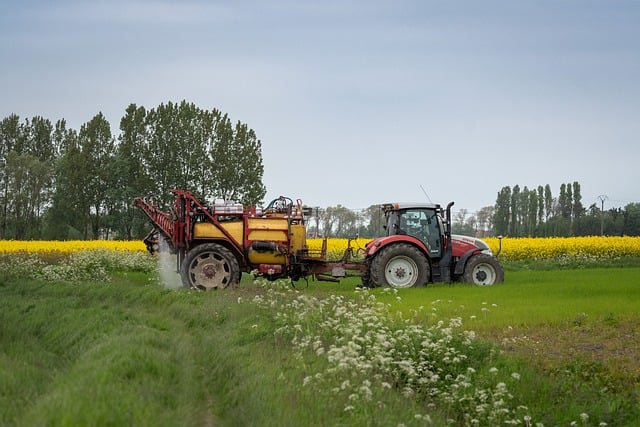Agricultural land is a valuable asset, and entering into a lease agreement requires careful consideration for both landlords and tenants. Blackstone Solicitors, with our experience in agricultural property law, can guide you through the intricacies of agricultural land leases in England and Wales. In this article, Agricultural Land Lease Agreement UK, we take a look at the process and mechanism involved.
Free Initial Telephone Discussion
For a free initial discussion with a member of our New Enquiries Team, get in touch with us today. We are experienced in dealing with all the legal aspects of agricultural leases, and once instructed, we will review your situation and discuss the options open to you in a clear and approachable manner. Early expert legal assistance can help ensure you are on the best possible footing from the start and also avoid the stress of dealing with these issues on your own. Simply call us on 0345 901 0445 or click here to make a free enquiry and a member of the team will get back to you.
Understanding Agricultural Tenancies
In the UK, agricultural land lease agreements are governed by specific legislation, notably the Agricultural Tenancies Act 1995. This legislation distinguishes between different types of agricultural tenancies, including Farm Business Tenancies (FBTs) and Agricultural Holdings Act Tenancies (AHAs), each with its own set of regulations and requirements.
Lease Duration and Renewal
Lease duration is a crucial aspect of agricultural land lease agreements. FBTs typically offer more flexibility with shorter lease terms, while AHAs often provide long-term security for tenants. Understanding the implications of lease duration, including rights to renewal and termination, is essential for both landowners and tenants to plan effectively and mitigate risks.
Rent and Payment Terms
Rent structure and payment terms vary depending on the type of tenancy and negotiations between parties. Rent may be fixed, variable, or based on agricultural productivity, with payment schedules agreed upon in the lease agreement. Landowners and tenants should carefully consider factors such as market trends, land quality, and investment returns when determining fair rent terms.
Use of Land and Agricultural Activities
Agricultural land lease agreements specify the permitted use of the land and any restrictions on agricultural activities. Common provisions include requirements for sustainable farming practices, conservation measures, and compliance with environmental regulations. Clear delineation of land use ensures alignment with agricultural objectives while safeguarding the land’s productivity and biodiversity.
Maintenance and Repairs
Clarifying maintenance and repair responsibilities is essential to prevent disputes and ensure the proper upkeep of agricultural land and infrastructure. Lease agreements typically outline obligations for routine maintenance, repairs, and improvements, with provisions for sharing costs or reimbursing expenses. Effective maintenance protocols contribute to the long-term sustainability and profitability of agricultural operations.
Subletting and Assignment
Agricultural tenants may seek to sublet or assign their leasehold interests, subject to landlord consent and compliance with legal requirements. Lease agreements often include provisions governing subletting and assignment, outlining procedures for seeking approval and transferring responsibilities to subtenants. Landowners retain the right to safeguard the integrity of the land and uphold the terms of the lease agreement.
Termination and Dispute Resolution
Termination provisions and dispute resolution mechanisms play a crucial role in agricultural land lease agreements. Both parties should understand the conditions under which the lease may be terminated, including breaches of contract, non-payment of rent, or changes in land use. Dispute resolution clauses may specify procedures for mediation, arbitration, or legal recourse to resolve conflicts amicably.
Compliance with Regulatory Requirements
Agricultural land lease agreements must comply with regulatory requirements, including planning regulations, agricultural subsidies, and environmental stewardship schemes. Landowners and tenants should stay informed about relevant legislation and regulatory changes that may impact their rights and obligations under the lease agreement.
Conclusion
Agricultural land lease agreements form the foundation of relationships between landowners and tenants in the UK agricultural sector. By understanding key considerations such as lease duration, rent terms, land use, and dispute resolution, parties can establish mutually beneficial arrangements that support sustainable farming practices and promote long-term agricultural productivity. Blackstone Solicitors is committed to providing expert legal advice and assistance to clients across England and Wales, ensuring the successful negotiation and implementation of agricultural land lease agreements.
How we can help
We have a proven track record of helping clients deal with agricultural leases. We will guide you through the process and ensure all checks are carried out swiftly and efficiently and we firmly believe that with the right solicitors by your side, the entire process will seem more manageable and far less daunting.
How to Contact Our Commercial Property Solicitors
It is important for you to be well informed about the issues and possible implications of dealing with an agricultural lease. However, expert legal support is crucial in terms of ensuring a positive outcome to your case.
To speak to our Commercial Property solicitors today, simply call us on 0345 901 0445, or click here to make a free enquiry. We are well known across the country and can assist wherever you are based. We also have offices based in Cheshire and London.
Disclaimer: This article provides general information only and does not constitute legal advice on any individual circumstances.





